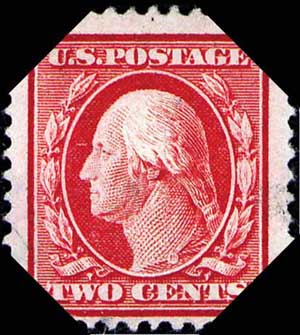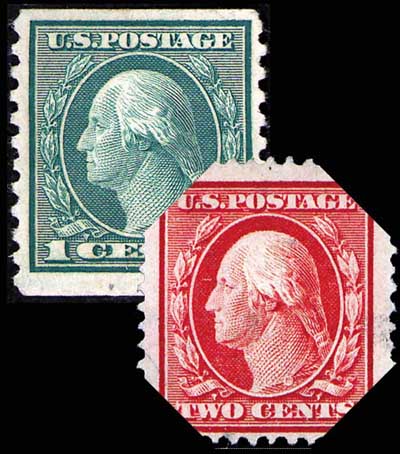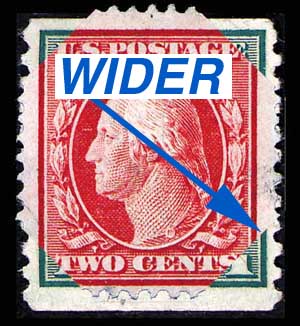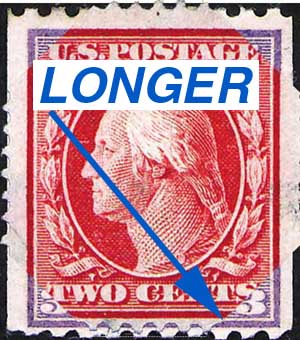back to back to
Flat Plate vs Rotary Press Printings
A further refinement to the engraved printing process was the evolution from the sheet fed Flat Plate Printing to the Rotary Press Printing. The faster Rotary Press utilized a revolving rotary cylinder that printed onto a continuous roll of paper that was fed through the press.
Both the Flat Plate and Rotary Press printings utilized the same engraved master dies to transfer the design from the master to a soft metal printing plate. However, the plate for the Rotary Press was then stretched to fit around the "curved" rotary cylinder. This plate stretching caused the Rotary Press stamps to be slightly longer or wider than those of the Flat Plate Printings.
Create a Template
A simple template can be created using a known Flat Plate stamp that will allow one to easily identify and distinguish a Flat Plate from a Rotary Plate printing.
1. Choose an inexpensive Flat Plate issue and trim all 4 corners to make your "Flat Plate Template". A used #332 is a good choice. |
 |
2. Slide the "Flat Plate Template" over the stamp you are measuring. |
 |
3. Move the "Flat Plate Template" until both the top and left outer frame lines are overlapped exactly. Then look at the right side and bottom. If the stamp you are measuring is wider or longer than the template it is a Rotary Press Printing. |


|
Engraved vs Offset Printing
Until 1918, every U.S. stamp had been printed using the engraved process. The war in Europe eliminated Germany as the world's supplier of printing inks. Alternate sources were found but trace impurities in the ink were causing the engraved printing plates to wear out prematurely. To produce stamps more quickly a switch was made to offset printing.
Offset printing can be distinguished from engraved printing simply by feeling the printed surface with the tips of your fingers. The surface of an offset printed stamp is smooth, whereas an engraved stamp has a rougher more textured feeling to it due to the tiny "ridges" of ink that are applied to the paper from the engraved printing plate.

